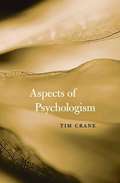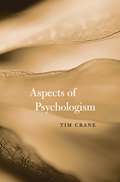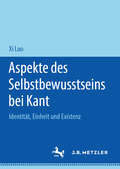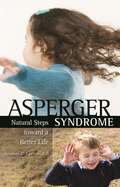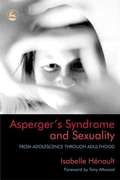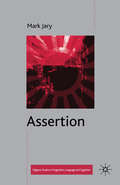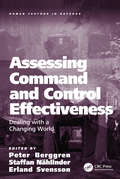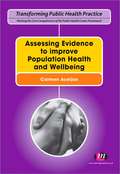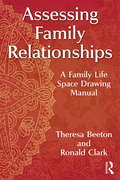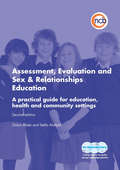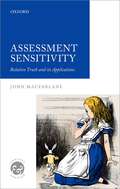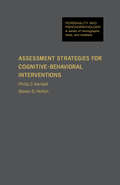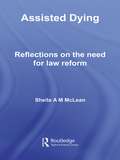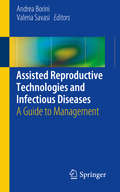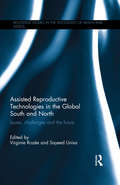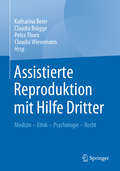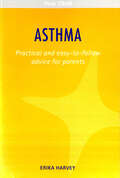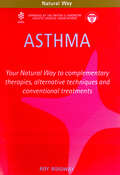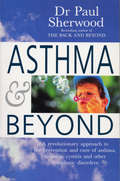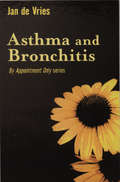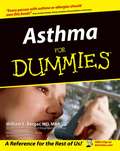- Table View
- List View
Aspects of Psychologism
by Tim CraneAspects of Psychologism is a penetrating look into fundamental philosophical questions of consciousness, perception, and the experience we have of our mental lives. Psychologism, in Tim Crane's formulation, presents the mind as a single subject-matter to be investigated not only empirically and conceptually but also phenomenologically: through the systematic examination of consciousness and thought from the subject's point of view. How should we think about the mind? Analytical philosophy tends to address this question by examining the language we use to talk about our minds, and thus translates our knowledge of consciousness into knowledge of the concepts which this language embodies. Psychologism rejects this approach. The philosophy of mind, Crane contends, has become too narrow in its purely conceptual focus on the logical and linguistic formulas that structure thought. We cannot assume that the categories needed to understand the mind correspond absolutely with such semantic categories. Crane's claim is that intentionality--the "aboutness" or "directedness" of the mind--is essential to all mental phenomena. He criticizes materialist doctrines about consciousness and defends the position that perception can represent the world in a non-conceptual, non-propositional way, opening up philosophy to a more realistic account of the mind's nature.
Aspects of Psychologism
by Tim CraneAspects of Psychologism is a penetrating look into fundamental philosophical questions of consciousness, perception, and the experience we have of our mental lives. Psychologism, in Tim Crane's formulation, presents the mind as a single subject-matter to be investigated not only empirically and conceptually but also phenomenologically: through the systematic examination of consciousness and thought from the subject's point of view. How should we think about the mind? Analytical philosophy tends to address this question by examining the language we use to talk about our minds, and thus translates our knowledge of consciousness into knowledge of the concepts which this language embodies. Psychologism rejects this approach. The philosophy of mind, Crane contends, has become too narrow in its purely conceptual focus on the logical and linguistic formulas that structure thought. We cannot assume that the categories needed to understand the mind correspond absolutely with such semantic categories. Crane's claim is that intentionality--the "aboutness" or "directedness" of the mind--is essential to all mental phenomena. He criticizes materialist doctrines about consciousness and defends the position that perception can represent the world in a non-conceptual, non-propositional way, opening up philosophy to a more realistic account of the mind's nature.
Aspekte des Selbstbewusstseins bei Kant: Identität, Einheit und Existenz
by Xi LuoDie leitende Frage im vorliegenden Buch lautet: Was ist das Selbstbewusstsein bei Kant? Es ist das Ziel von Xi Luo, die Frage nach der Beschaffenheit des Selbstbewusstseins im Rahmen von Kants theoretischer Philosophie systematisch zu rekonstruieren. Anhand des Deduktion-Kapitels und des Paralogismus-Kapitels der Kritik der reinen Vernunft behandelt der Autor drei zentrale Aspekte des Selbstbewusstseins: Identität, Einheit und Existenz. Aufgrund einer textnahen Rekonstruktion von den Kantischen Argumenten gelangt der Autor zum Ergebnis, dass das reine Selbstbewusstsein das Bewusstsein vom identischen Ich, das Bewusstsein vom vereinheitlichenden Ich und das Bewusstsein von der Existenz des transzendentalen Ich ist.
Asperger Syndrome: Natural Steps toward a Better Life (Complementary and Alternative Medicine)
by Suzanne C. LawtonAsperger Syndrome now affects an estimated 10 million children and adults in the United States. Here, Lawton takes an evenhanded look at AS, its development and symptoms, the biological and potential genetic components, the associated physical complaints, and how natural medicine can help. She includes a history of early treatment and current drug and psychotherapy treatments, and explains how diet, blood sugar, and food sensitivities or allergies can play a role. She also looks at the controversy over vaccinations and explains blood tests that can pinpoint a rationale for herbal and homeopathic treatments. The book includes a chapter specifically addressing what is safe to do on your own and when you should seek the help of a medical practitioner. Resources include a listing of AS traits, books that are reliable sources of information, and authoritative Web sites.The spotlight on Asperger Syndrome has been widening with recent attention from mainstream media. This neurological condition, often misdiagnosed as Attention Deficit Disorder, Obsessive Compulsive Disorder, or high-functioning autism is increasingly being recognized, and now affects an estimated 10 million children and adults in the United States alone. Unlike autistic individuals, Asperger sufferers have normal or above normal language, intelligence and cognition, and are often seen as brilliant—verbose with formal speech patterns and superior memory—but they have odd interests, unusual reactions to the environment, inflexibility in routines, poor interaction with people, and inability to form age-appropriate relationships. There is no known cure, but as Suzanne Lawton explains in this work, there are approaches that can reduce or remove the symptoms. While traditional medications are the only option for some sufferers, there are those who can benefit from the natural treatments offered by herbal medicine, diet and nutrition, homeopathy, and amino acids. These drug-free approaches also reduce the physical problems common to Asperger suffers, including stomachaches and headaches and irritable bowel syndrome. says Lawton.Recent FDA warnings regarding the use of psychotropic medications with children (previous treatment has focused on anti-anxiety, anti-depressant, and mood-stabilizing drugs) have fueled the outcry of parents who want to get their children off drugs to avoid the side effects. Here, Lawton takes an evenhanded look at Asperger Syndrome, its development and symptoms, the biological and potential genetic components, the associated physical complaints, and how natural medicine can help. She includes a history of early treatment and current drug and psychotherapy treatments, and explains how diet, blood sugar, and food sensitivities or allergies can play a role. She also looks at the controversy over vaccinations and explains blood tests that can pinpoint a rationale for herbal and homeopathic treatments. Lawton includes a chapter specifically addressing what is safe to do on your own and when you should seek the help of a medical practitioner. Resources include a listing of AS traits, books that are reliable sources of information, and authoritative Web sites.
Asperger's Syndrome and Sexuality: From Adolescence through Adulthood (PDF)
by Isabelle Henault Tony AttwoodPlaying the dating game is often tricky: all the more so for individuals with Asperger's Syndrome. How do AS adolescents and their families cope with sexual feelings and behaviour? What help can be given if a man with AS oversteps the mark in expressing his sexuality? How do people with AS deal with intimacy and communication in sexual relationships? In this comprehensive and unique guide, Isabelle Hénault delivers practical information and advice on issues ranging from puberty and sexual development, gender identity disorders, couples' therapy to guidelines for sex education programs and maintaining sexual boundaries. This book will prove indispensable to parents, teachers, counsellors and individuals with AS themselves.
Assertion (Palgrave Studies in Pragmatics, Language and Cognition)
by M. JaryAssertion is a term frequently used in linguistics and philosophy but rarely defined. This in-depth study surveys and synthesizes a range of philosophical, linguistic and psychological literature on the topic, and then presents a detailed account of the cognitive processes involved in the interpretation of assertions.
Assessing Command and Control Effectiveness: Dealing with a Changing World (Human Factors in Defence)
by Peter Berggren Staffan Nählinder Erland SvenssonAssessing Command and Control Effectiveness: Dealing with a Changing World offers a description of the current state of Command and Control (C2) research in imperfect settings, showing how a research process should assess, analyse and communicate results to the development cycle of methods, work, manning and C2-technology. Special attention is given to the development of C2 research methods to meet the current and coming needs. The authors also look forward towards a future where effective assessment of C2 abilities are even more crucial, for instance in agile organisations. The purpose of the C2 research is to improve the process and make it more effective while still saving time and money. Research methods have to be chosen carefully to be effective and simple, yet provide results of high quality. The methodological concerns are a major consideration when working under such circumstances. Furthermore, there is often a need for a swift iterative development cycle, and thus a demand to quickly deliver results from the research process. This book explains how field research experimentation can be quick, simple and effective, being able to draw valid conclusions even when sample sizes are small and resources are limited, collecting empirical data using measures and procedures that are minimally intrusive.
Assessing Command and Control Effectiveness: Dealing with a Changing World (Human Factors in Defence)
by Peter Berggren Staffan Nählinder Erland SvenssonAssessing Command and Control Effectiveness: Dealing with a Changing World offers a description of the current state of Command and Control (C2) research in imperfect settings, showing how a research process should assess, analyse and communicate results to the development cycle of methods, work, manning and C2-technology. Special attention is given to the development of C2 research methods to meet the current and coming needs. The authors also look forward towards a future where effective assessment of C2 abilities are even more crucial, for instance in agile organisations. The purpose of the C2 research is to improve the process and make it more effective while still saving time and money. Research methods have to be chosen carefully to be effective and simple, yet provide results of high quality. The methodological concerns are a major consideration when working under such circumstances. Furthermore, there is often a need for a swift iterative development cycle, and thus a demand to quickly deliver results from the research process. This book explains how field research experimentation can be quick, simple and effective, being able to draw valid conclusions even when sample sizes are small and resources are limited, collecting empirical data using measures and procedures that are minimally intrusive.
Assessing Evidence to Improve Population Health and Wellbeing (PDF)
by Carmen AceijasWritten to support practitioners undertaking a Masters in public health, this book considers the main concepts, issues and methodologies of the second core competence of the Public Health Skills and Career Framework: 'Assessment of evidence of the effectiveness of interventions, programmes and services to improve population health and wellbeing'. Coverage includes the theoretical definition of evidence and its use in public health, the role of critical appraisal methods and tools in evidence assessment and how Effectiveness, Efficiency and Quality inform evidence. The book is packed with case studies and activities to help link theory and practice and prompt personal reflection.
Assessing Family Relationships: A Family Life Space Drawing Manual
by Theresa A. Beeton Ronald A. ClarkAssessing Family Relationships shows mental health professionals how to utilize the Family Life Space Drawing (the FLSD), a family assessment tool that incorporates information from multiple family members while building connections between the clinician and the client. In this manual, Theresa A. Beeton and Ronald A. Clark demonstrate the usefulness of the FLSD in both family and couple counseling. As a task-centered assessment tool, the FLSD enables an interactive and personalized process of counseling, which helps individuals to express concerns and information about themselves in an indirect and nonthreatening manner. Chapters are illustrated throughout with case studies and drawings adapted from the authors’ own clinical experience, and the manual offers an overview of the history of the FLSD, as well as where future research is headed. Providing a practical explanation of how to complete the FLSD process, Assessing Family Relationships will be highly relevant to couple and family therapists, as well as clinical social workers, who are interested in updating their practice with innovative family assessment research and techniques.
Assessing Family Relationships: A Family Life Space Drawing Manual
by Theresa A. Beeton Ronald A. ClarkAssessing Family Relationships shows mental health professionals how to utilize the Family Life Space Drawing (the FLSD), a family assessment tool that incorporates information from multiple family members while building connections between the clinician and the client. In this manual, Theresa A. Beeton and Ronald A. Clark demonstrate the usefulness of the FLSD in both family and couple counseling. As a task-centered assessment tool, the FLSD enables an interactive and personalized process of counseling, which helps individuals to express concerns and information about themselves in an indirect and nonthreatening manner. Chapters are illustrated throughout with case studies and drawings adapted from the authors’ own clinical experience, and the manual offers an overview of the history of the FLSD, as well as where future research is headed. Providing a practical explanation of how to complete the FLSD process, Assessing Family Relationships will be highly relevant to couple and family therapists, as well as clinical social workers, who are interested in updating their practice with innovative family assessment research and techniques.
Assessment, Evaluation and Sex and Relationships Education: A practical toolkit for education, health and community settings (PDF)
by Lisa Handy Sam Beal Simon Blake Stella MuttockYoung people consistently describe SRE in schools as 'too little, too late and too biological' - they say they want better SRE. This hugely popular practical guide highlights why assessment and evaluation are fundamental to effective sex and relationships education. This second edition has been fully updated and gives practitioners clear advice on how assessment and evaluation can be used in SRE. Assessment, Evaluation and Sex & Relationships Education includes: an overview of best practice in SRE; a summary of the theory and practice of assessment and evaluation; activities to assess the learning and development of individuals; activities to evaluate and review teaching approaches. This guide will assist educators to support children and young people in accessing relevant information, developing emotional and social skills, and clarifying beliefs and values about sex and relationships.
Assessment Sensitivity: Relative Truth and its Applications (Context & Content)
by John MacFarlaneJohn MacFarlane debates how we might make sense of the idea that truth is relative, and how we might use this idea to give satisfying accounts of parts of our thought and talk that have resisted traditional methods of analysis. Although there is a substantial philosophical literature on relativism about truth, going back to Plato's Theaetetus, this literature (both pro and con) has tended to focus on refutations of the doctrine, or refutations of these refutations, at the expense of saying clearly what the doctrine is. In contrast, Assessment Sensitivity begins with a clear account of what it is to be a relativist about truth, and uses this view to give satisfying accounts of what we mean when we talk about what is tasty, what we know, what will happen, what might be the case, and what we ought to do. The book seeks to provide a richer framework for the description of linguistic practices than standard truth-conditional semantics affords: one that allows not just standard contextual sensitivity (sensitivity to features of the context in which an expression is used), but assessment sensitivity (sensitivity to features of the context from which a use of an expression is assessed). The Context and Content series is a forum for outstanding original research at the intersection of philosophy, linguistics, and cognitive science. The general editor is François Recanati (Institut Jean-Nicod, Paris).
Assessment Strategies for Cognitive–Behavioral Interventions
by Philip C. Kendall Steven D. HollonAssessment Strategies for Cognitive-Behavioral Interventions is a collection of original contributions provided by leaders in the field who consider the theoretical and applied assessment issues related to the expanding field of cognitive-behavioral interventions. Chapters in the present volume, designed as a companion volume to an earlier text, Cognitive-Behavioral Interventions: Theory, Research, and Procedures, focus on the issues inherent in the measurement of cognitive and behavioral events and processes. The book opens with an overview of recent growth in the field. Attention is devoted to examining several goals of the new assessment endeavors, some suggestions related to the proposed methods, and certain problems inherent in cognitive-behavioral assessments. Separate chapters follow that deal directly with a variety of specific content areas. These include a conceptualization of attributions, as well as describing their measurement and speculating as to their role in both the etiology and treatment of psychological disturbance; and suggestions for assessment in clinical interviews and for using psychometric instruments and discusses belief systems and irrationality. Subsequent chapters focus on special populations and procedures.
Assisted Dying: Reflections on the Need for Law Reform (Biomedical Law and Ethics Library)
by Sheila McLeanAssisted Dying explores the law relating to euthanasia and assisted suicide, tracing its development from prohibition through to the laissez faire attitude adopted in a number of countries in the 21st Century. This book provides an in-depth critique of the arguments surrounding legislative control of such practices and particularly looks into the regulatory role of the state. In the classical tradition of libertarianism, the state is generally presumed to have a remit to intervene where an individual’s actions threaten another, rather than harm the individuals themselves. This arguably leaves a question mark over the state’s determined intervention, in the UK and elsewhere, into the private and highly personal choices of individuals to die rather than live. The perceived role of the state in safeguarding the moral values of the community and the need for third party involvement in assisted suicide and euthanasia could be thought to raise these practices to a different level. These considerations may be in direct conflict with the so called right to die espoused by some individuals and groups within the community. However this book will argue that the state’s interests are and should be second to the interests that the people themselves have in choosing their own death. Assisted Dying is winner of the The Minty Prize of the Society of Authors, and winner of the Royal Society of Medicine Book Awards, 2008
Assisted Dying: Reflections on the Need for Law Reform (Biomedical Law and Ethics Library)
by Sheila McLeanAssisted Dying explores the law relating to euthanasia and assisted suicide, tracing its development from prohibition through to the laissez faire attitude adopted in a number of countries in the 21st Century. This book provides an in-depth critique of the arguments surrounding legislative control of such practices and particularly looks into the regulatory role of the state. In the classical tradition of libertarianism, the state is generally presumed to have a remit to intervene where an individual’s actions threaten another, rather than harm the individuals themselves. This arguably leaves a question mark over the state’s determined intervention, in the UK and elsewhere, into the private and highly personal choices of individuals to die rather than live. The perceived role of the state in safeguarding the moral values of the community and the need for third party involvement in assisted suicide and euthanasia could be thought to raise these practices to a different level. These considerations may be in direct conflict with the so called right to die espoused by some individuals and groups within the community. However this book will argue that the state’s interests are and should be second to the interests that the people themselves have in choosing their own death. Assisted Dying is winner of the The Minty Prize of the Society of Authors, and winner of the Royal Society of Medicine Book Awards, 2008
Assisted Reproductive Technologies and Infectious Diseases: A Guide to Management
by Andrea Borini Maria Valeria SavasiThis concise and practical book is the first of its kind to examine the use of assisted reproductive technologies (ART) in relation to blood-borne infectious diseases: human immunodeficiency virus (HIV), hepatitis B (HBV) and hepatitis C (HCV). The book opens with a discussion of the impact of these viruses on male and female fertility, followed by specific chapters of each of them, including ART with HIV and HCV serodiscordant couples (where either the male or female is positive) and the detection and impact of HBV and HCV in human gametes and embryos. An important character on laboratory safety when performing ART with blood-borne viruses follows, and the book concludes with a discussion of ART in austere and resource-poor settings, where these infections are often dominant due to lack of treatment and access to vaccines. Written and edited by an international array of experts in reproductive medicine, Assisted Reproductive Technologies and Infectious Diseases explores questions, techniques, and related issues with the aim of effectively helping clinicians working with serodiscordant couples wishing to have children.
Assisted Reproductive Technologies in the Global South and North: Issues, Challenges and the Future
by Virginie Rozée Sayeed UnisaAssisted Reproductive Technologies in the Global South and North critically analyses the political and social frameworks of Assisted Reproductive Technology (ART), and its impact in different countries. In the context of a worldwide social pressure to conceive – particularly for women – this collection explores the effect of the development of ARTs, growing globalisation and reproductive medicalization on global societies. Providing an overview of the issues surrounding ART both in the Global South and North, this book analyses ART inequalities, commonalities and specificities in various countries, regions and on the transnational scene. From a multidisciplinary perspective and drawing on multisite studies, it highlights some new issues relating to ART (e.g. egg freezing, surrogacy) and discusses some older issues regarding infertility and its medical treatment (e.g. in vitro fertilisation, childless stigmatisation and access to treatment). This book aims to redress the balance between what is known about Assisted Reproductive Technologies in the Global North, and how the issue is investigated in the Global South. It aims to draw out the global similarities in the challenges that ARTs bring between these different areas of the world. It will appeal to scholars and students in the social sciences, medicine, public health, health policy, women’s and gender studies, and demography.
Assisted Reproductive Technologies in the Global South and North: Issues, Challenges and the Future
by Virginie Rozée Sayeed UnisaAssisted Reproductive Technologies in the Global South and North critically analyses the political and social frameworks of Assisted Reproductive Technology (ART), and its impact in different countries. In the context of a worldwide social pressure to conceive – particularly for women – this collection explores the effect of the development of ARTs, growing globalisation and reproductive medicalization on global societies. Providing an overview of the issues surrounding ART both in the Global South and North, this book analyses ART inequalities, commonalities and specificities in various countries, regions and on the transnational scene. From a multidisciplinary perspective and drawing on multisite studies, it highlights some new issues relating to ART (e.g. egg freezing, surrogacy) and discusses some older issues regarding infertility and its medical treatment (e.g. in vitro fertilisation, childless stigmatisation and access to treatment). This book aims to redress the balance between what is known about Assisted Reproductive Technologies in the Global North, and how the issue is investigated in the Global South. It aims to draw out the global similarities in the challenges that ARTs bring between these different areas of the world. It will appeal to scholars and students in the social sciences, medicine, public health, health policy, women’s and gender studies, and demography.
Assistierte Reproduktion mit Hilfe Dritter: Medizin - Ethik - Psychologie - Recht
by Katharina Beier Claudia Brügge Petra Thorn Claudia WiesemannSammelband mit Beiträgen von 28 Expertinnen und Experten aus dem Bereich der assistierten Reproduktion.Immer häufiger werden Verfahren der medizinisch assistierten Reproduktion genutzt, die den Beitrag Dritter einschließen, also Samenspende, Eizellspende, Embryospende oder Leihmutterschaft. Diese Formen der Familienbildung mit Hilfe Dritter werfen ein breites Spektrum an medizinischen, ethischen, rechtlichen und lebensweltlichen Fragen auf, die umfassend und im interdisziplinären Kontext diskutiert werden sollten. In diesem Sammelband mit Beiträgen in deutscher und englischer Sprache diskutieren Expertinnen und Experten aus unterschiedlichen fachlichen und lebensweltlichen Perspektiven Probleme und Lösungsansätze. Empirische Analysen aus der internationalen Forschung und Praxisbeispiele aus Großbritannien, USA, Australien und Neuseeland ergänzen die Darstellung.
Asthma
by Erika HarveyAsthma is a frightening condition for both parents and children. It can lead to enormous restrictions and greatly affect a child’s development physically, emotionally and socially.
Asthma
by Roy RidgwayAsthma affects millions of people worldwide and the numbers, especially of children, are increasing at an alarming rate. A severe attack can be fatal. Conventional medicine often seems powerless to help – and may even be making the situation worse.
Asthma And Beyond
by Dr Paul SherwoodAfter helping thousands of people with back and heart problems, Doctor Sherwood deals with more ailments - from the small but irritating symptoms of colds to the life-threatening diseases such as appendicitis. Having studied the human lymphatic system for most of his life Paul Sherwood has come to the conclusion that many of our afflictions are rooted in blockages and malfunctions of this vital but over-looked fluid network. Using case histories from his long experience as an eminent West-End physician he illustrates his theories with proven examples - explaining the causes of symptoms in simple terms and the means by which they were relieved. The book concentrates on preventative measures and especially in children where catarrh, ear and throat trouble can cause such misery. There is also an emphasis of this theory in the treatment of Asthma, the bane of modern urban life - with diet, exercise and environmental considerations all playing an important part in health recovery. His original theories on preventing cot-death, asthma, arthritis, sinusitis etc. have already cured his patients - this book will help many more suffers.
Asthma and Bronchitis
by Jan De VriesIt is clear that asthma and bronchitis are on the increase, especially in Britain, and there are strong indications that this rise may be linked to atmospheric influences. Jan de Vries has over 30 years' experience of treating these conditions and in this important title in the By Appointment Only series he sets out his own ideas about respiratory disorders. He shows, for example, how many allergic reactions can result in asthma-related problems, hay-fever being a case in point. Viruses, bacteria and irritants may result in dry coughs, mucus formation, breathlessness, muscle pain and even light fever, depression and sometimes emphysema. Emphysema is known to be incurable, but Jan de Vries shows his treatments can bring welcome relief.
Asthma For Dummies (For Dummies Ser.)
by William E. BergerThe incidence of asthma is rising dramatically in the United States and across the globe. Asthma affects 17 million people in the U.S. and is the most common chronic childhood disease. If you or someone you love suffers from asthma, you know that there is no cure—however, with proper care, asthmatics can lead normal, active, and fulfilling lives. Now you can breathe easy with this plain-English guide, which clearly explains the prevention, diagnosis, symptoms, and treatment of the disease. Asthma For Dummies will help asthma sufferers and their loved ones get a strong handle on managing the disease. Dr. William Berger, one of the nation’s foremost experts on allergies and asthma, gives you the tools you need to: Understand the relationship between allergies and asthma Identify your asthma triggers Prepare for your first doctor’s visit Allergy-proof your home or office environment Avoid asthma complications Find outside support Featuring up-to-date coverage of childhood asthma, this easy-to-understand guide covers all the vital issues surrounding asthma, including handling food allergies, exercising when asthmatic, asthma during pregnancy, and all the latest medications. You’ll find tips on avoiding allergens that cause respiratory symptoms, testing for allergies, and dealing with HMOs. This fact-packed guide also features: A dedicated chapter to asthma in the elderly The latest information on Claritin and Clarinex, two common allergy medications taken by those with asthma The interrelationships between asthma and other respiratory complications of untreated allergy such as ear, sinus, tonsil, and adenoid disease Extensive information on controller drugs and rescue medications Future trends in asthma therapy Offering the latest on allergy shots and tips for traveling with asthma, Asthma for Dummies will relieve your anxiety about asthma, help you control your triggers, and manage the disease long-term.
